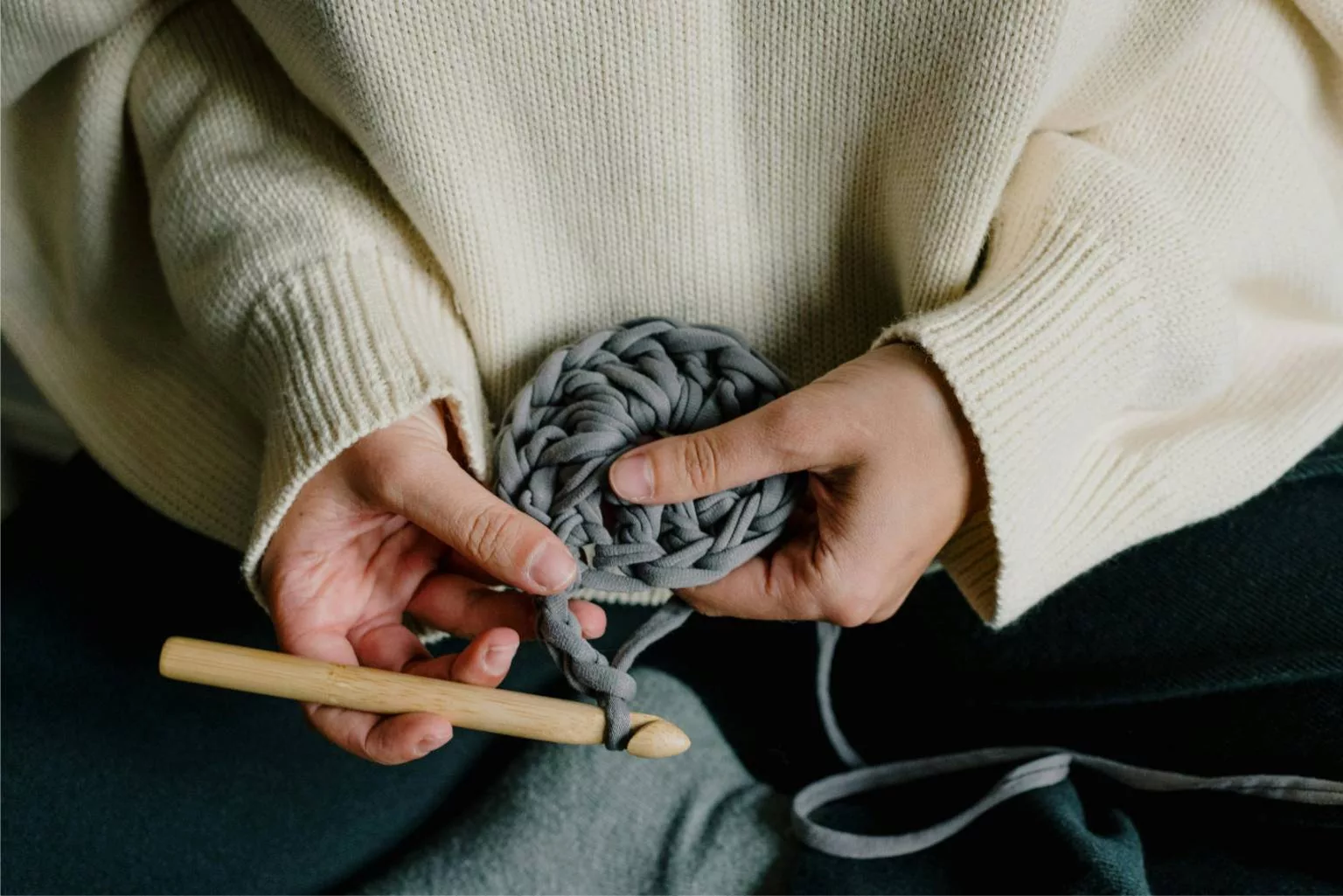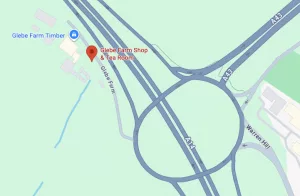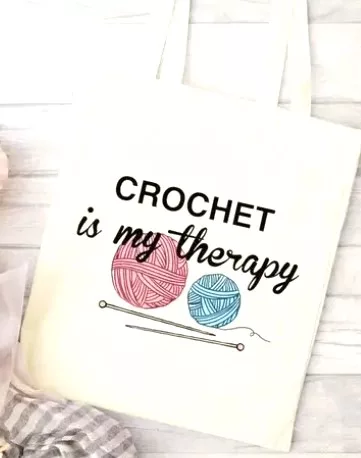During world-wide epidemic of Covid in 2020 we were all forced to stay inside and looked for various new ways of keeping ourselves entertained and busy. Many turned to learning to play instruments, writing, arts and crafts. This has resulted in a boom in knitting and crochet that still seems to be growing.
Modern crochet became popular during the 19th century in Europe. It first started using various embroidery stitches and techniques over a fabric background, however, over time the background was removed but the stitches stayed in place. This formed a type of lace pattern which then was developed into crochet as we know it.
What’s the difference between knitting and crochet?
The main difference between the two is the tools that are used. Knitting uses two knitting needles where crochet uses one hook. The yarn you use is the same but they are different types of stitches which create different looks. Despite the differences you can make roughly the same types of finished articles such as blankets, scarves, jumpers, cardigans and toys. The possibilities are endless.
Is crochet hard?
Crocheting is not hard, however, as with anything you do there will be a learning curve and practice makes perfect. It will take time to learn to get your tensions right and learn to read patterns. Start with straight forward projects, practising basic stitches and often watching Youtube videos helps as it is often easier to see what some-one means. Your first stitch will be a chain, followed by double crochet for crocheting and cast on and knit stitch for knitting.
You must read patterns carefully and check if they are written in English or American terminology. A conversion table is below for you for crochet, knitting is the same.
| UK | US/Canada |
| Slip stitch (ss) | Slip stitch (sl ss) |
| Double crochet (dc) | Single crochet (sc) |
| Half treble (htr) | Half double crochet (hdc) |
| Treble (tr) | Double crochet (dc) |
| Increase (inc) | Increase (inc) |
| Decrease (dec) | Decrease (dec) |
What should I learn first?
Learn about the hooks, sizes and types of yarn available. Your project and the size you want to produce will dictate the size hook and type of yarn you need. See the conversion chart below for wool and size hooks/needles for a rough guide but follow the pattern.
|
UK |
US/Canada | Australia | Crochet blanket/clothing | Crochet toys | Knitting |
| Double knit | DK/light worsted | 8 ply | 4mm | 3mm | 4mm |
| Aran | Worsted | 10 ply | 5mm | 3.5mm | 5mm |
| Chunky | Bulky | 12 ply | 6mm | 4mm | 6mm |
| Super chunky | Super bulky | 14 ply | 7mm | 4.5mm | 7mm |
What can you crochet?
You can pretty much crochet anything as it is sturdy and can be completed in either rows or rounds.
Rows – back and forwards turning at the end of every row. This is perfect for blankets and can be used for clothing and toys but these will them need sewing together.
Rounds – this is known as amigurumi and can be used to produce a continuous item that doesn’t then need sewing together. This is perfect for jumpers, toys and socks.
Why can’t I get my tension right?
This is the hardest part of crocheting to master, unfortunately it is very frustrating and only comes with patience and practice. Keep going as it will be mastered and start by making something straight forward, such as a scarf so it doesn’t matter if you have any mistakes and you will see progress quickly.
Why are my edges uneven?
The main reason this happens is because you’re either adding or losing stitches. Whether you are a beginner or an experienced crocheter it is important to count your stitches on each row, most patterns tell you how many stitches you should have on each row. Sometimes the last stitch can be easy to miss especially if you are turning using a chain.
When working in rows you can easily count them while you are working or keep a tally on a piece of paper. When working in rounds use a stitch marker to show the end of a row as move it as you complete the correct number of stitches in the next round as this is continuous crochet, amigurumi.
Do you count the loop on the hook as a stitch?
No, this is not a stitch, just a loop for you to start forming your stitch from.
Does the foundation chain count as my first row?
No, this is needed to start a project to give you a base to start from, the other way is when you work in rounds and use a magic ring or chains in to a ring to start from.
How do I finish a project?
When you have finished the last stitch of your project pull the hook up a bit to make the loop bigger, cut the yarn approximately 8-10cm away from your project. Using the hook pull the length all the way through the loop and pull tight to form a knot. Using a sewing needle weave the end in to your work.
Tags
Shere




I like the helpful info you provide in your articles.
I will bookmark your blog and check again here regularly.
I’m quite certain I’ll learn a lot of new stuff right
here! Best of lick for the next! https://Www.Waste-ndc.pro/community/profile/tressa79906983/